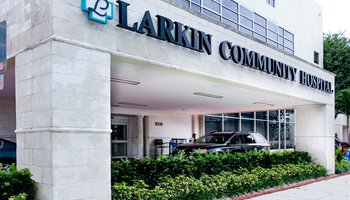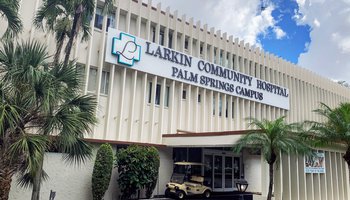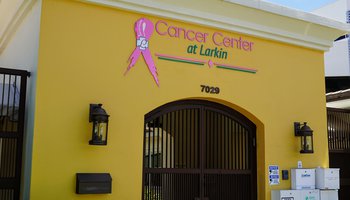- Home »
- Treatments & Services »
- Cancer (Oncology) »
- Breast Cancer
Battling Breast Cancer
for ALL our patients.
Breast Cancer
Breast cancer is the abnormal growth of cells in the breast. Cancer that is isolated in the breast is not fatal. Only when the cancer spreads to other areas of the body such as the lungs, bone, liver, and brain does a patient’s chance of mortality increase. This is why it is important to learn the signs and symptoms of breast cancer and have routine screenings such as mammography’s to check for cancer in its early stages. Metastatic breast cancer is the term used to describe the spread of breast cancer to other organs (systematic dissemination). This can happen when microscopic cancer spreads into the lymph nodes or blood vessels.
There are many types of breast cancer but the most common forms include: invasive ductal carcinoma (IDC) and invasive lobular carcinoma.
- Invasive ductal carcinoma (IDC): accounts for 80% of all breast cancers and occurs when the cancer breaks out of the milk ducts and invades the breast tissue. This differs from ductal carcinoma in situ (DCIS) in which the cancer remains in the milk ducts. The milk ducts are the tubes that carry milk from the lobules to the nipple. The lobules are the gland in the breast that produce milk.
- Invasive lobular carcinoma: accounts for 15% of breast cancers and occurs when the cancer breaks out of the lobules into the surrounding tissue.
Breast Cancer Treatment
Breast cancer can be treated locally (directed at the specific cancerous body), systemically (affecting the whole body), or through a combination of these treatments. Our physicians will use a variety of factors to determine which treatment is right for you including the progression, aggressiveness, originating tissue, and metastasis of the cancer.
Local treatments for breast cancer include mastectomy, lumpectomy, and radiation therapy.
A mastectomy is the total surgical removal of the breast tissue in one (unilateral) or both (bilateral) breasts. There are different types of mastectomies:
- Total/Simple Mastectomy
- The skin, nipple, areola (the circular pigmented skin surrounding the nipple), and tissue of the breast are removed
- The lymph nodes and muscles under the breast are not removed
- Radical Mastectomy (Rarely performed)
- The skin, nipple, areola, and tissue of the breast are removed
- The axillary lymph nodes (Levels I, II, and III) and muscles under the breast are also removed
- This option is used if the cancer has spread to the chest muscles
- Modified Radical Mastectomy
- The skin, nipple, areola, and tissue of the breast are removed
- The axillary lymph nodes are removed (Levels I and II) but the muscle under the breast are not removed
- Nipple- Sparing Mastectomy
- The breast tissue is removed but the nipple and areola are not
- The pouch of skin that remains is used to form the new breast during breast reconstruction
- Skin-Sparing Mastectomy
- The nipple, areola, and tissue of the breast are removed but most of the skin remains
- The pouch of skin that remains is used to form the new breast during breast reconstruction
Lumpectomy is the surgical removal of a tumor and a small portion of the adjacent tissue that surrounds it. Our surgical oncologist might recommend this form of treatment if the cancer is isolated to a specific region and not suspected to have spread.
Facilities
Breast Cancer | Larkin Health Please Visit or Call The Following Facilities.
Physicians
Physicians Treating Breast Cancer | Larkin Health.


